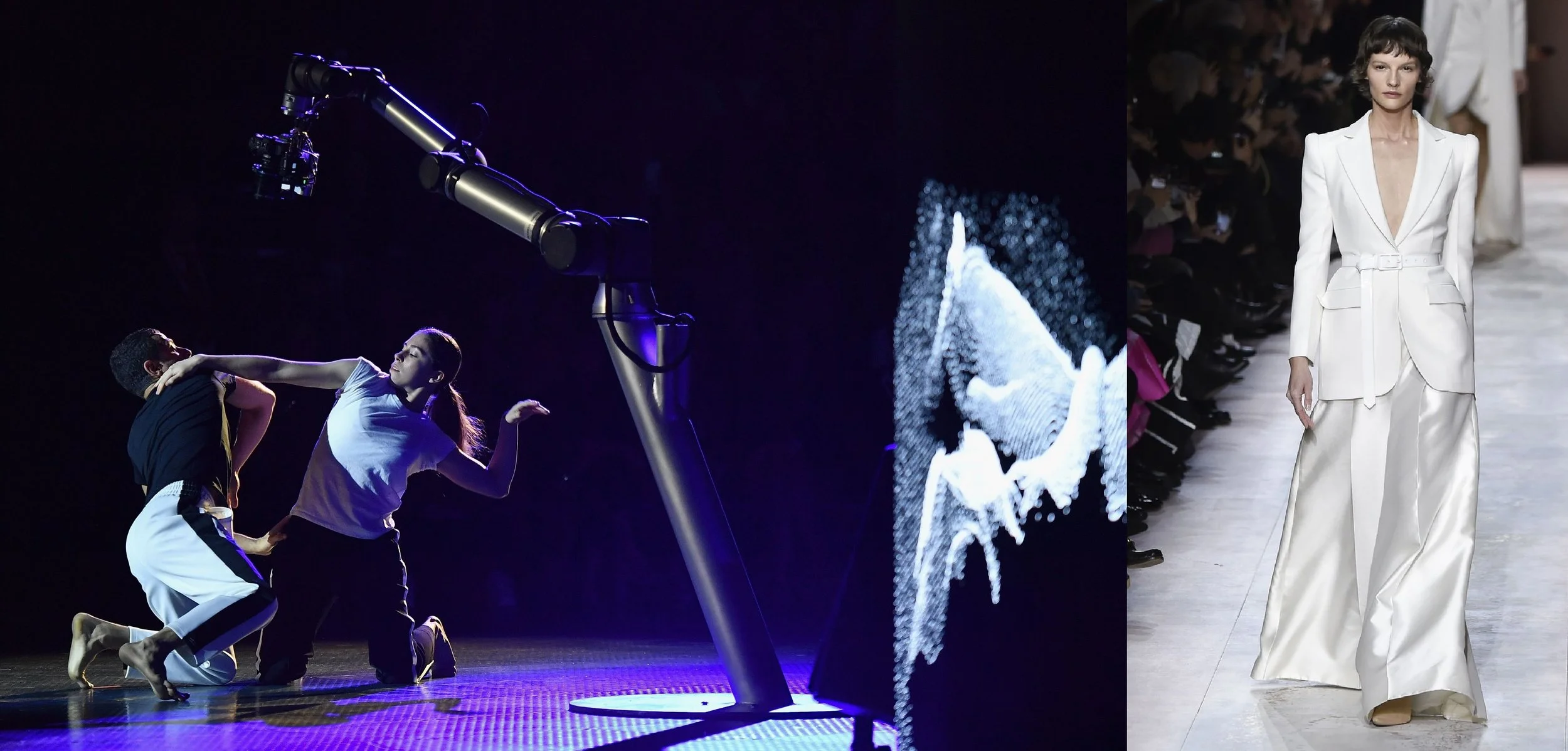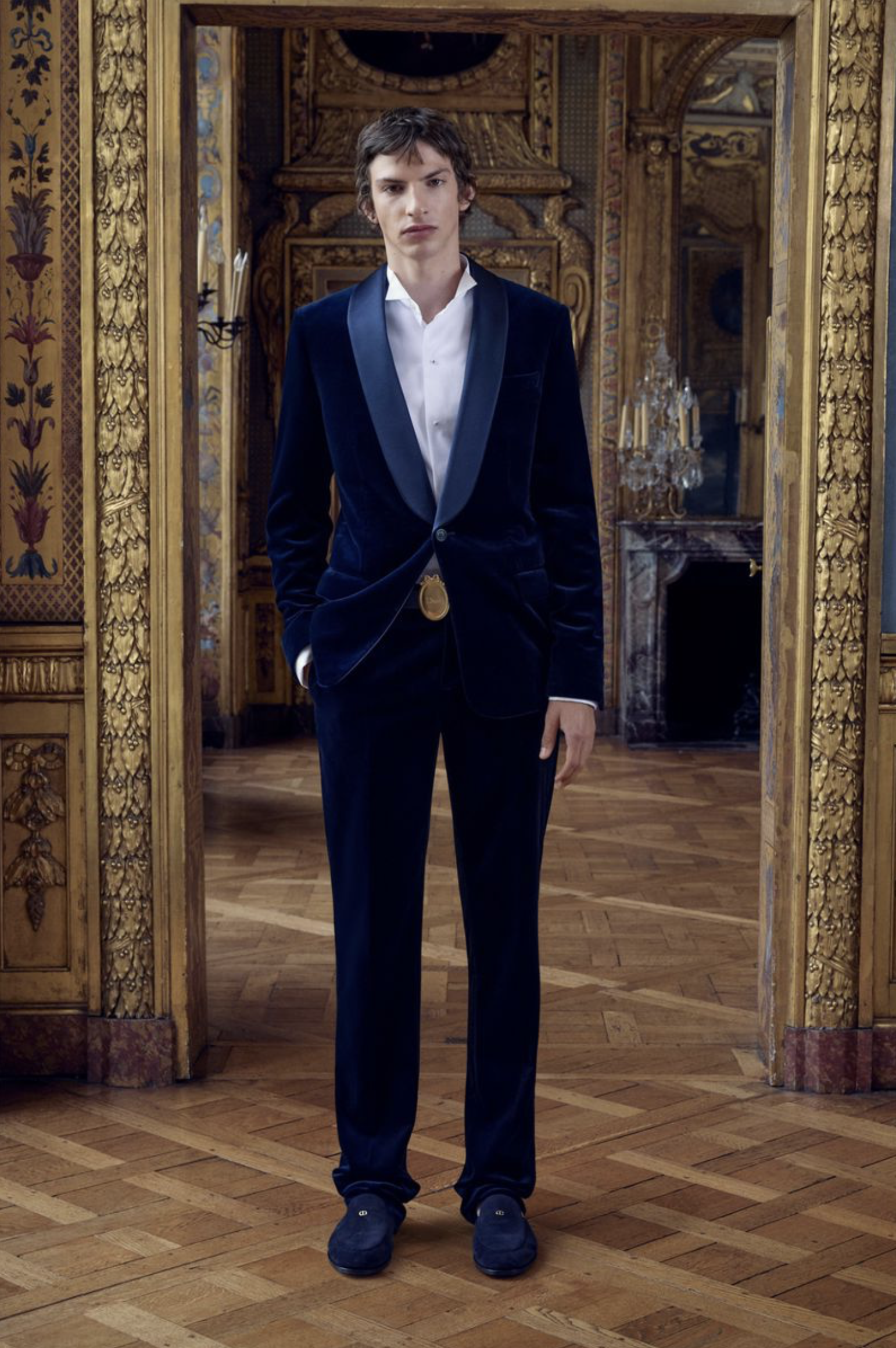What the Future of Tech Holds for Bespoke Fashion
/As a pure term ‘Bespoke’ is English-derived and means ‘made to order’ mainly from the customer’s measurements, with alterations to each customer’s taste made in fabric and the garment design process.
A bespoke garment is generally machine-made, unlike ‘couture’, in which a substantial portion of the garment – typically 60% minimum — is made by hand.
Bespoke fashion is generally considered to be an investment piece. In the increasingly important world of deadstock fabrics, a bespoke fashion purchase becomes a tiny production run, sometimes a one-off, tailored for each individual buyer.
In a slow-fashion world – one we do not live in – consultation between the bespoke fashion customer and creator would not happen over a Zoom call. Reality is that Zoom-call consultations are the tip of the iceberg in ways that technology is woven into not only bespoke fashion but all fashion – high and low; slow and fast.
Imagine for a moment living in a bespoke house. Does anyone seriously disagree that while the home may be a renovated brownstone in Manhattan that pays homage to the Gilded Age past, smart technology is running the housekeeper, who is running the home.
Technology now affects all aspects of modern life, including what we wear, how we make it, and where we buy it. So yes, even bespoke fashion can and is affected by modern technology, and a large part of this technological advancement is big data. This article looks at how technology and big data affect bespoke fashion and why it is important in the modern age for all businesses to be aware of the benefits, risks, and challenges of big data.
In particular, the fashion industry, which is worth over $630 billion globally, has always been at the forefront of technological developments. It was fashion and apparel markets that first went online and led to the growth in e-commerce. The current explosion of big data offers a mind-bogging volume of information available to bespoke-loving fashionistas and brands eager to use this latest tech to improve what it is we do.
What is the data age?
We now live in a time where data can be regarded as the new gold. Information rules and is now the determining aspect of buying decisions, new business development choices, and how your fashion marketing is done.
Big data is a component of this data age that has had the most impact on the business sector, and if fashion is to move forward with the rest of the business sector, it is necessary that you too understand what the big data phenomenon is and how to use it.
How bespoke fashion can benefit from the new tech and big data
Bespoke fashion is about creating something that no one else has, but it also needs to be saleable, cost-effective, and capable of building your brand. For all this to happen and be carried by the bespoke fashion items you can put out there, you need to be seen, and to be seen, you need to be sold. Innovative technologies and IT infrastructures such as the cloud and big data have made irreversible changes to fashion and the businesses that operate in this sector.
Tech in fashion
Fashion and technology have always been closely related, and innovative fashion has always been the forerunner in the use of available technology of our time. It is a relationship that is set to continue as fashion looks to recover.
Artificial intelligence for clothing design
Project Muze has been one of the first tests of the artificially designed clothing range by Google and the e-commerce company Zalando. Based on the collection of trends on social media and through big data, these trends can then be programmed and, using artificial intelligence, a range of clothes produced based on the style preferences pinpointed on the internet and the aesthetics based on parameters from online fashion trends.
AOC notes that Project Muze has not evolved without challenges and contradictions. Tech blog Endgaget called its designs “samey’.
This data can be refined as narrowly or widely as we desire. One assumes that data and sourcing information could offer a critical assist to those bespoke brands wanting to pursue a concrete path to sustainability, without hiring Stella McCartney or Gabriela Hearst to create the hands-on, human-centered sustainability development blueprint.
Influencer marketing
The use of social media as a social marketplace for fashion has exploded based on the use of social media influencer marketers. Influencer marketing is based on the sale of products based on the recommendation and suggestions on social media of those who have tribes of followers. Social media has become a marketplace, and the most successful way to move fashion and lifestyle products has been through the use of the social media influencer marketer. Whether your business uses an influencer or simply keeps up to date with the latest news and influencer socials in terms of fashion and design, then you too will be able to adjust your design and fashion ranges to suit current trends.
This is one of the best ways to market and sell bespoke fashion as buyers now want to be able to dress like their favorite personalities, and this may require the purchase of similar yet bespoke pieces and garments to keep up with the influencers they follow.
AR, VR dressing, and fitting rooms
Fashion lovers and shoppers can now try anything on without being in a bricks-and-mortar shop or touching a piece of clothing. Instead, augmented reality can be used to place the item of clothing over a live image of the customer or potential buyer. The buyer can then see the style, size, and fit of the product or clothing that they are interested in before buying and without having to go to the shop itself. These AR or VR fitting rooms are currently trending and have been proved to keep customers in the online store longer than any other marketing ploy.
A wider range of bespoke fashion than ever before in the cloud
Fast fashion is still a large part of the global fashion industry, but as technology improves and the social influencer manages to drive demand, the need for individual style is becoming paramount. The knowledge as to what people want to wear and the ability for the buyer to become involved in the design process has seen the largest range of bespoke clothing online than ever before. The technology to understand fashion needs and then mass produce individualized, personalized bespoke fashion is the way forward.
Brand development
The best way to build a brand online is to use the available technology and ensure consistency across all channels and platforms. If your brand is not on the right social media platforms or among the trending fashion pages, it can affect your brand development outlook.
In the ying and yang of fashion world, however, there is always room for the dissident voice – like Milan-based Bottega Veneta who dropped the gauntlet in first-quarter 2021, going dark on social media. However—as multiple media voices pointed out: “The truth is, Bottega isn’t really vanishing from social. It’s just letting others do the work for it.”
Big data in a fashion
The research and reading show that one of the key uses of data and big data is determining trends and customer needs and wants. These are key to selling and creating desirable fashion products, and as such, it is clear the value of big data.
Knowing what the customer bought last time they visited, whether virtually or in real terms, allows you to position your next product in a relevant and relevant way and show that you care about the customer.
Customer research:- being able to access the widest amount of data on our customers is one of the biggest benefits of big data. This is so important that one of the key skills in current demand throughout the fashion and bespoke garment industry has been for data analytics and people who understand fashion. Whether it is the management who have these skills themselves or simply the understanding as presented in this article as to the importance and uses of big data and the associated technology
The demand is for managers and employees who can use the big data available to provide insights as to fashion trends, demographic customer details, their historic transactional details, and everything else that their online profiles and information reveals that will be of interest and use to your fashion business. It is clear that fashion and bespoke fashion are changing, who would have thought that one of the first requirements for a fashion and design business may be the techies, data scientists, and cloud computing experts.
Market Research is one of the most important aspects for any business to get right. Knowing what the external market is doing, trending, and who your competition is are all principal factors. These can all be established and determined using big data. In addition, trend forecasting, supply chain management, customer and competitor behavior analysis, and preferences are all essential if your fashion and designs are going to resonate with the market and the buyers out there.
Personalized Marketing Being able to personalize your fashion marketing and gather data from social media to position your products at the forefront of customers’ minds and on buying lists is the only way forward. It is directly linked to the personalization of fashion in that everyone wants to be different. The availability of big data and the data analytics skills as aforementioned will allow your business to present fashion items to individual clients and customers that your research shows they will appreciate and be likely to purchase. It is a fantastic way to target high-value customers, but also regular small spend customers can be sent details of ranges that add to what they have previously bought or based on their previous uncompleted searches and online shopping experiences.
Concluding comments
The essential skills to have in your business to make use of these technological improvements and developments have been touched on herein but will range from IT technicians to data analysts, web designers, and social media managers. It is a full-time process, and while fashion design and production are primarily about creativity and a feel for the fabric, the moment, and the needs and demands of society, technology may be about to change all this.
The disruption of the fashion industry is an ongoing process, and all season’s new releases feel like a leap into the future; however, with the growth and development of technology as detailed in this article, bespoke fashion is changing, and soon all of us will be able to wear fashion that is every day in its function, yet bespoke and personalized in its design and creation.
Fashion is about fun, the fun involved in creation, design, modeling, and then actually wearing and interacting with the garments that have been produced. Modern technology is making this process a great deal more interactive and from designing your own pair of trainers to having an outfit designed to mirror what one of your fashion heroines recently wore is all part of this fun. If your business is going to keep up with the competition and keep your clients and customers having fun, you will have to join the tech revolution occurring in fashion.












